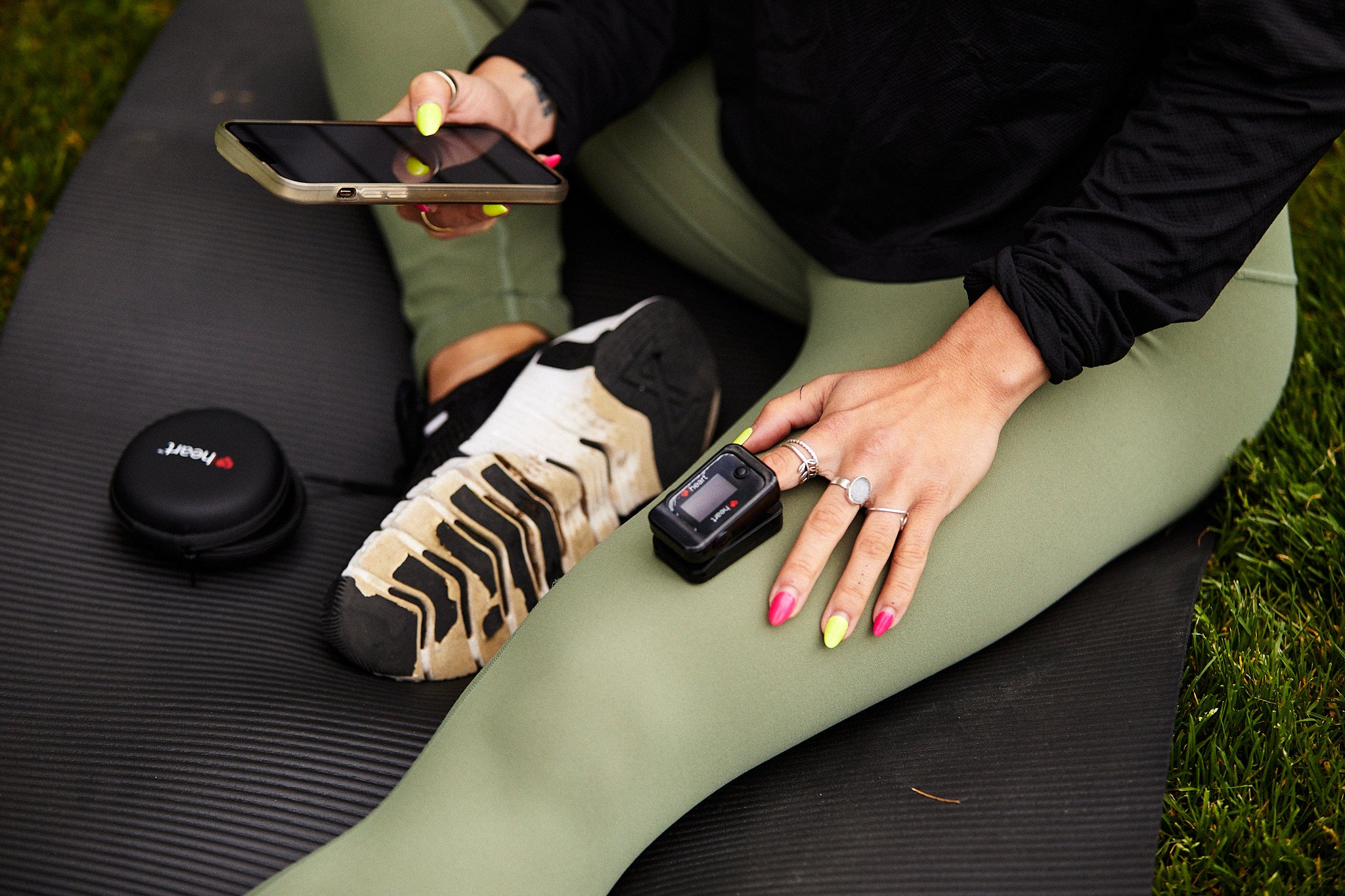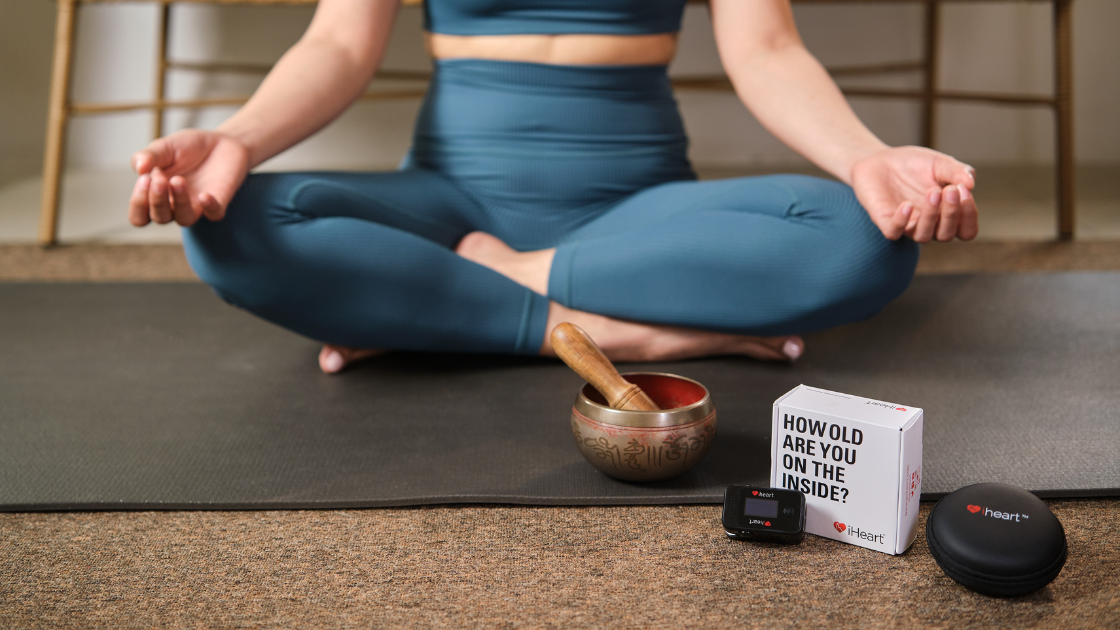You’ve just taken your first reading in the iheart Internal Age App and received your score. Now that you know how old you are on the inside, you might be wondering: what can I do with this information?
iheart Internal Age was designed for so much more than simply telling you your biological age. It’s a launchpad for transforming your health, with the goal of helping you feel better and live longer. Your score could be lowered in as little as three weeks as you build lasting healthy habits and prioritize your holistic wellness.
If you’re ready to venture out on your personal health journey and turn back the clock on your internal age, read on. This is our ultimate guide to getting the most out of the iheart Internal Age app.
Understand what your internal age really means for your health
To get the maximum wellness benefits out of the Internal Age app, it’s vital to understand exactly what we mean by internal age, and how this impacts your overall health. We recommend taking a look around our website and blog for lots of helpful information, starting with the post What Does My Internal Age Really Mean for My Health?
If you’re short on time, here’s a brief rundown: iheart calculates your internal age – how old you are on the inside – by measuring your aortic stiffness with the iheart device. Since the aorta (the largest artery in the body) naturally stiffens with age, we can estimate how old you are on the inside by comparing your readings to that of a healthy individual at each age.
If you get a lower internal age score than your actual age, that means you have good internal mobility for your stage in life. Internal mobility refers to the youthfulness and flexibility of important internal structures, including your aorta, spine, diaphragm, and other organs.
Internal mobility is essential for both heart and brain health by allowing your heart to pump more effectively and your cerebrospinal fluid to flow more easily. Poor internal mobility has the opposite effect, leading to increased risk of cardiovascular disease, dementia, and even death by all biological causes.
The good news is, aortic stiffness can be reversed and internal mobility can be significantly improved through lifestyle changes. That’s why knowing how old you are on the inside is so important to your health. It allows you to see where your physical wellness currently stands so that you can begin making choices today that will create a better future for you tomorrow.
Rest before you take your reading
While it might be tempting to take your Internal Age reading right after a workout, we recommend sitting and resting for at least two minutes before testing. During the test, rest your arm on a flat surface like a tabletop or your leg.
The iheart device is very sensitive to factors like heart rate and blood pressure, so it’s important to be in a resting state before and during your test to ensure a consistent baseline reading.

Take regular readings around the same time of day
We recommend testing your internal age every day, but this isn’t necessary. You can still enjoy the health benefits of knowing your internal age by taking readings on a regular schedule that works for you, whether that’s daily, every other day, weekly, or monthly.
The most important thing is to take your readings around the same time of day to help ensure the most reliable scores. We find that first thing in the morning is the ideal time to take readings.
Focus on your score trends, not the variations
Something you may notice as you start tracking your internal age is that your score fluctuates. One day, your internal age may be 47, and the next it might be 52. If that’s the case for you, your iheart device isn’t broken – it’s working just as it’s supposed to!
The sensitivity of the iheart device and its ability to calculate your current internal age in real-time is what makes it so helpful. Your internal physiology is changing day by day. That workout you did yesterday or those extra glasses of wine you had this week do impact your body on the inside, and your Internal Age scores will reflect that. That’s what makes it so helpful for building lasting healthy habits. You might notice your age goes down after a few days of yoga practice, or it might go up after a particularly hard week at work.
To get the most out of your Internal Age readings, don’t get caught up in the variations – look at the overall trends. Over time, you’ll notice whether your internal age is trending up or down. If you’re starting to notice it trending down over several weeks or months, you can be confident that you’re making positive choices for your health.

Don’t be discouraged if your internal age is higher than your actual age
If the Internal Age app gives you a score that’s higher than your actual age, don’t be alarmed just yet. Your internal age can be lowered no matter what stage you’re at in life, and it’s never too late to start!
Our bodies are highly receptive to lifestyle changes. In fact, the stiffer your aorta, the faster you’ll notice your internal age lowering as you make smarter choices for your health. As you make those adjustments, you can start to reverse your aortic stiffness, improve internal mobility, and your internal age could lower notably in as little as three weeks.
While there are some things about our health we can’t control, there’s a lot we do have in our power to control. It all starts with developing good habits and taking small daily steps toward better health.
Use it to test how lifestyle choices impact your health
As we mentioned earlier, the beauty of the iheart device and Internal Age app is its ability to measure your internal age moment by moment. That means your scores may change slightly every time you take a reading, but that’s exactly what you want it to do. This allows you to see the impact that your daily choices have on your overall health.
By taking regular readings at the same time of day and making note of what occurred leading up to the test – such as your diet, stressful events, activity and exercise, sleep, etc. – you’ll be able to see the connection between your body and lifestyle. Use this information to build habits that positively affect your scores and fuel your motivation to keep going on your wellness journey.

Follow our tips for lowering your internal age
Now that you know lowering your internal age is possible, you might be wondering how to make it happen. We have lots of helpful resources on this and are always publishing more, like the blog post Five Ways to Lower Your Internal Age.
To make it easy to remember, these are what we call the “3 Golden Rules” for lowering your internal age:
- Exercise
- Diet
- Stress management
Ultimately, if you commit to moving your body regularly, eating a healthy and well-rounded diet low in sugars, salt, and saturated fats, and finding healthy ways to manage your stress, you’ll notice a positive downward trend in your internal age.
Want to get weekly tips on optimizing your health and lowering your internal age? Be sure to join the iheart community on Facebook and Instagram, and subscribe to our newsletter.






Share:
How to Get the Most out of the iheart HRV App
Four Foods for a Healthy Brain